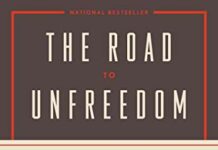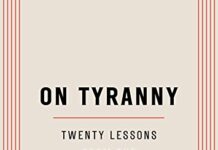
Ebook Info
- Published: 2015
- Number of pages: 437 pages
- Format: PDF
- File Size: 4.51 MB
- Authors: Timothy Snyder
Description
NEW YORK TIMES BESTSELLER • “[Timothy] Snyder identifies the conditions that allowed the Holocaust—conditions our society today shares. . . . He certainly couldn’t be more right about our world.”—The New Republic A “gripping [and] disturbingly vivid” (The Wall Street Journal) portrait of the defining tragedy of our time, from the #1 New York Times bestselling author of On Tyranny ONE OF THE BEST BOOKS OF THE YEAR—The Washington Post, The Economist, Publishers WeeklyIn this epic history of extermination and survival, Timothy Snyder presents a new explanation of the great atrocity of the twentieth century, and reveals the risks that we face in the twenty-first. Based on untapped sources from eastern Europe and forgotten testimonies from Jewish survivors, Black Earth recounts the mass murder of the Jews as an event that is still close to us, more comprehensible than we would like to think and thus all the more terrifying. By overlooking the lessons of the Holocaust, Snyder concludes, we have misunderstood modernity and endangered the future. The early twenty-first century is coming to resemble the early twentieth, as growing preoccupations with food and water accompany ideological challenges to global order. Our world is closer to Hitler’s than we like to admit, and saving it requires us to see the Holocaust as it was—and ourselves as we are. Groundbreaking, authoritative, and utterly absorbing, Black Earth reveals a Holocaust that is not only history but warning.New York Times Editors’ Choice • Finalist for the Samuel Johnson Prize; the Mark Lynton History Prize; the Arthur Ross Book Award
User’s Reviews
Reviews from Amazon users which were colected at the time this book was published on the website:
⭐I had no idea these things happened, but bloodlands was so much the horrible history, and what I love about this book is he includes that part, but puts it in a context to understand it better and to hopefully be able to do more to prevent it happening again. A very good book.
⭐I have read “about” Dr. Snyder views on Holocaust and got curious. I ordered the “Bloodlands” and “Black Earth” from my local library and I read it from the first page to the last… Than I ordered “Black Earth” from Amazon: I want to have my own copy.First comment is on available editions: I don’t know quality of eBook version, but I won’t recommend first paperback edition (it what is now, the following editions may be better). Reason: “Black Earth” contains maps (many maps). Paperback edition made pocket-size on non-whitened paper of poor quality in very small font. Even I can read the text, maps become non-intelligible to me (I’m moderately near-sited and read small font without glasses). And maps is important part of the book.I ordered hard-cover edition used in near new condition and I received it in a new condition (not even traces of any use). try your luck like me or pay a bit more for a new hard-cover edition (IMHO, paperback edition should be recalled as defective product, but I never heard about such things in book publishing).Dr. Henry Kissinger on the back cover stated “Part history, part political theory…” and he’s absolutely right. Book is indeed groundbreaking on both of those points. I see some number of very interesting comments on the merit and accuracy of some details in the book, but the big picture is what I’m talking about.I’m not a learned historian of any kind, I just leaved my life in this history (I’m not eye witness of Holocaust, thanks Haven, I was born almost 20 years later, but my family, my growing-up in the shadow of it…). It was my life-long straggle to understand how it happen, why, and why it happen to “my people”.I have read with interest the very extensive academic-level comments and won’t go into those details. I just want to say that “Black Earth” is a very hard and slow read (it was for me). Much more so than “Boodlands”. I have a very few points that I would like to have clarification from Dr. Snyder and will try to contact him through the publisher (or Amazon). I would point that “Bloodlands” is much more “conventional” read (with and without quotes) and I will write the separate comments on it.And the last: “Black Earth” is – technically – about events of 70+ year old history, but it has very explicit implications on today’s World (and Dr. Snyder touching it in afterwords). You don’t need to have PHD in History or Social or Political Since to read this book, but don’t expect any enjoyment from reading other than better understanding of the World around you. And yes, read it. It worth the trouble doing it.
⭐Virtually everyone I know who thinks, and who has any interest in understanding our world and the Holocaust , should read “Black Earth”. Prof. Snyder had written the definitive single volume that can enable someone who understands “what” happened in the Holocaust to form some very good ideas—in an understandable vehicle—about “how” and “why” it happened. “Black Earth” disabuses the reader of many of our misconceptions about where the Holocaust happened and who the victims were (e.g., only 3% of Holocaust victims even spoke German)—and that there were clearly discernible “good and bad guys” living in the areas where it happened at the time. For me , this is a great service to European history of the 20th (and, arguably, 21st Century) as I view the Holocaust as the “axial” event of the former, to use his term. (A clever play on the “Axis” powers, whether intended or not.)Prof. Snyder has accomplished this without “merely” writing a history of specific “mass murder.” His purview and conclusions are much much larger and more profound and compelling. (If this isn’t the “job” of a historian, whose “job” is it? ).“Black Earth” allows us to understand the minds of the perpetrators and accomplices , and even question the innate beneficence of humankind. In fact, many “choices” made in the Holocaust were more a question of shades of gray than “Black” or Blood(lands) red. In my view, this approach well serves the memories of the victims of this tragedy, as it explicates their then-incomprehensible (and often shades of gray) universe as the unfortunate product of much more than the simplistic “antisemitism” gone rampant. At least thinking in this way can, hopefully, serve to thwart subsequent “perfect storms” and their havoc, as Snyder urges. “Black Earth” enables a big payoff for intensive reading and some new, big words. Most people interested in trying to comprehend the Holocaust have one book “in them”. This is that “one book” I’ve long sought that I can recommend to attempt comprehend the “how did it happen?” of the Holocaust, for those who know– or think they know– “what” happened.
⭐I have all of Timothy Snyder’s books.In ‘Blood Lands’ his account of Nazi and Communist fascism and how the peoples between Berlin and Moscow suffered was good enough for most of us, albeit harrowing. His idea (also echoed in the ‘Road to Unfreedom’) that both Left and Right use fascist techniques to rule over people and achieve nationalist goals I think is spot on and refreshing.He also keeps Hannah Arendt’s flame alive about the concept of the ‘banality of evil’ – that there exists in any society at any time a portion of the population who are receptive to fascistic manipulation (especially during certain vulnerable circumstances such as when society is destabilised by economic or geo-political shocks for example). And that there are people willing to use fascism to get into political power.In ‘Black Earth’ however, Snyder digs deeper and looks at the mechanics of fascism – how fascism’s practitioners were able to win over normal everyday people and wreak hell upon the earth.This time Snyder focuses on the Nazi’s and their persecution of the Jews and others and highlights and examines the methodologies and tactics used to make these unfortunate victims into ‘non-people’.First of all, there is the creation of the alien – the person who is not one of us even though they’ve lived amongst us for years – they are different and not part of our culture and this is repeated over and over again with a fair dose of lies for good measure and faux-science.Upon the ‘aliens’ will be heaped all sorts of crimes from reducing the sanctity and purity of the blood line to their presence soaking up resources that only genuine non-aliens should be entitled to.Then having convinced everyone that these aliens are not wanted or welcome ( adding a few others to the list to be seen as fair game such as gays, the mentally ill, gypsies etc.,), next begins the excising of these people as citizens from the legal laws of the country – de-citizen-ising them so that they have no legal status and are thus welcome to be treated badly. They’re being set up to be got rid of, basically. Therefore the State’s institutions also stop seeing them as citizens and offer to recourse or those institutions are destroyed altogether (particularly in the states you invade, allowing these to become killing grounds for the aliens you have created).Once at that level, you have a problem in that there are so many of these ‘un-citizens’. So, the next thing the good fascist does is co-opt the nation or whatever countries you have conquered into joining in wiping the aliens out. It’s a good way of increasing manpower to get the extermination done.By doing this you are increasing your capacity to get rid of the numbers. But also it has subtle underlying personal political effects too on those press ganged or exhorted to join in. It creates a climate complicity through fear that causes shifting loyalties.Guilt through association is produced and a fear of personal retribution makes it essential to understand that the best way to deal with your complicity is to remove as much evidence as you can – wipe out the witnesses and your victims: burn and bury them and then destroy what you burned and buried them with if you can. Otherwise, you will be next – get them before they get you. This manufactured ‘logic’ is what drives complicity and denial that such horrors ever happened and effectively closes the door the Nazis opened.And those who helped persecuted peoples and rejected the self-surviving rationality of complicity can be seen as ‘irrational’ in their humanistic behaviour – it simply turns what being a decent human being is on its head and indicates the perverted twisted world created by fascism can be.Creating such societal pressures (to be seen to be joining in with murder just to prove that you are on the ‘right side’ for example ) with fascist techniques creates huge moral, ethical and tactical ambiguity for people in order to just survive. And despite all this some did indeed help Jews and persecuted groups – but they were an exception and also extraordinary people for the times. It certainly begs the question to the reader ‘What would you have done?’.And Poland – poor Poland – how she has suffered – attacked by both Germany and Russia as allies, then having the largest Jewish population in Europe erased by the Nazis, the rest of its people seen as sub-human until ‘liberated’ by Russia only for its nationals to be sent to the gulag for daring to say they were Polish. Horrendous.What is fascinating about this book is the final chapter – the conclusion – where Snyder asks if we have really changed since WWII. I also recommend this book because then Snyder does an amazing pivot at the end. He stops looking at history and turns his eye to the now and the future.He brings into play global warming, and looks at its potential geo-political impact which is going to cause a lot of change to happen and links Hitler’s desire for more living space for Germany (the driver for the Nazi advance into the East) with the pressures created by nations needing space as the ocean’s rise AND the land becomes too hot to live in under the pressure of global warming.Societies – as I interpret Snyder – are at their most vulnerable to fascism when faced with change or other pressures (real or imagined – and we know manufacturing problems is definitely a fascist tactic for Right wing and Left fascists but also global warming is such a real external pressure now). Snyder sees a lot of competition for liveable space in the future as the oceans rise and where we could begin to see mass migration and competition for space between nations.It makes for uncomfortable reading as even here at the end bringing together Nazi history with more recent and forthcoming events there is superb erudition, insight and reflection.Snyder’s concern is that fascism is there like an unexploded bomb just waiting to be touched or shaken and that instead of humanity working together to address and get through global warming we will instead be catapulted into another fascist era as we dehumanise and kill each other in pursuit of our own survival. The potential for fascism to turn people against each other (and for nations to dehumanise and de-citizen those who need our help) even as the planet begins to die is simply terrifying to consider. But having read this book, it is I’m afraid entirely possible. I kid you not.So reflecting on the title of the book ‘ Black Earth’ – what did Snyder have in mind when he wrote it? The ashes of the Jews and other Holocaust victims of the Nazis scattered over West and mostly Eastern Europe? The fertile lands between Berlin and Moscow that Hitler wanted for Germany? The mouldering loam of the Nazi execution pits dotted around the East? Or is it the scorched uninhabitable planet made uninhabitable by global warming and a fascist future? Or is it I suspect all of these things?We’ve been issued with a warning: we had better heed it, otherwise fascist hell will reign once more and not just in Europe this time but globally.Please read it.
⭐Simply the best history of the holocaust I have read.Most historians fall under the the enormity of this subject and fail to ask why. Snyder adopts a comparative approach and compares the fate of various Jewish populations throughout WW2 to try to understand why the survival rate in say Denmark was much higher than in say Holland. His conclusions are thought provoking, chilling but always argued from an evidence rich picture.Coupled with bloodlands, this establishes Snyder as the pre eminent historian of Europe’s descent into hell in the 1930s and 1940s.
⭐A very disturbing and fact based book on the political events leading up to and during the 2WW. A complicated subject dealt with in a not overly scholarly way that is easily understood and tends to dispel many myths surrounding The Holocaust. Excellent book, very good service from Wordery.
⭐The book reads a little heavy in parts for me, but not so bad that I even entertained the thought of putting it down. Where it discusses the conditions in which the holocaust thrived, and those where it did not, it is a fascinating read. I have read about some of these themes in other books, the role of citizenship for example, but this really picks out the context and nature of the issues. It certainly is the holocaust as history and warning.
⭐Awesome work. Timothy Snyder shows the steps by which such a terrible crime became possible. His knowledge of Central and Eastern Europe of this period is highly impressive. He does not get lost in fine detail, but keeps the big picture in view at all times. It’s an excruciating experience reading this, of courseThis is a very rare work of history that has changed the way I look at politics and the world today. I really hope that our current generation of political leaders read this.
Keywords
Free Download Black Earth: The Holocaust as History and Warning in PDF format
Black Earth: The Holocaust as History and Warning PDF Free Download
Download Black Earth: The Holocaust as History and Warning 2015 PDF Free
Black Earth: The Holocaust as History and Warning 2015 PDF Free Download
Download Black Earth: The Holocaust as History and Warning PDF
Free Download Ebook Black Earth: The Holocaust as History and Warning




